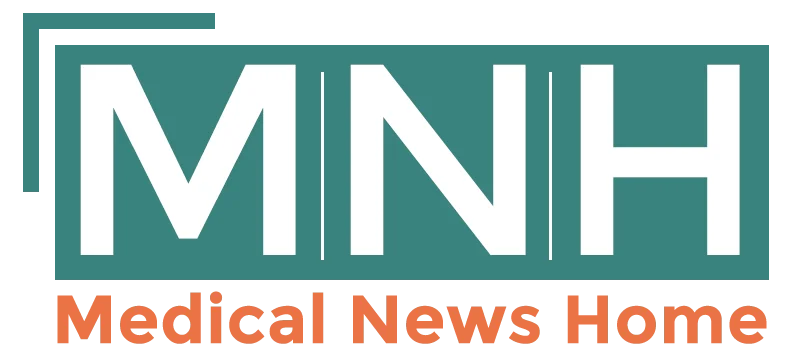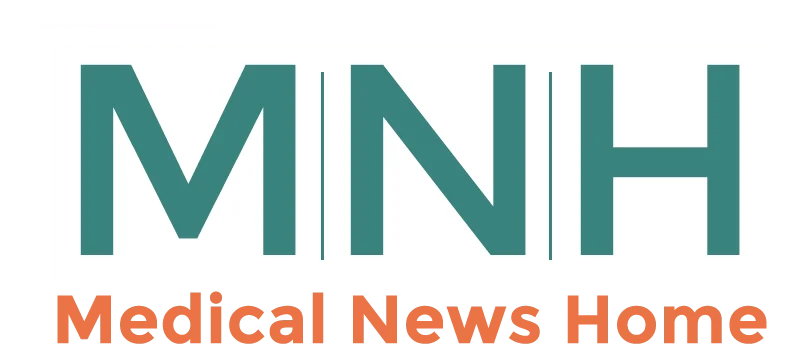Maximizing Comfort and Minimizing Pain: Prenatal Massage for Expectant Mothers
- Updated on: May 7, 2025
- Published on May 3, 2023

Prenatal massage is a specialized type of massage therapy designed specifically for expectant mothers. It is typically performed by a trained massage therapist who has experience working with pregnant women. Prenatal massage techniques are specifically adapted to accommodate the unique needs and changes that occur in a woman’s body during pregnancy, such as increased weight, changes in posture, and shifting hormones.
Prenatal massage can be performed in a variety of positions, including lying on the side, sitting in a chair, or lying face-down with a special table that accommodates a pregnant belly. The massage therapist may use a variety of techniques to help soothe sore muscles, reduce stress, and promote relaxation.
Benefits of prenatal massage
There are numerous benefits of prenatal massage for expectant mothers. These benefits include:
- Reducing stress and anxiety: Prenatal massage can help reduce stress and anxiety levels in expectant mothers, which can help improve both physical and emotional health.
- Relieving muscle tension and pain: Prenatal massage can help relieve muscle tension and pain associated with the physical changes that occur during pregnancy, such as back pain, leg cramps, and headaches.
- Improving circulation: Prenatal massage can help improve circulation in the body, which can help reduce swelling and promote overall wellness.
- Promoting relaxation and better sleep: Prenatal massage can help promote relaxation and improve sleep quality, which is essential for the health and well-being of both the mother and baby.
- Preparing the body for labor and delivery: Prenatal massage can help prepare the body for labor and delivery by promoting relaxation, reducing pain, and improving circulation.
Importance of prenatal massage during pregnancy
Prenatal massage is an important component of a woman’s pregnancy wellness routine. As the body undergoes significant changes during pregnancy, it is essential to prioritize self-care and take steps to manage stress and discomfort. Prenatal massage is a safe and effective way to reduce stress, relieve muscle tension, and promote relaxation during pregnancy. It can also help prepare the body for labor and delivery, which can lead to a more positive birth experience. By including prenatal massage as part of your pregnancy wellness routine, you can improve your overall physical and emotional well-being during this important time in your life.
The Science Behind Prenatal Massage
Prenatal massage is a therapeutic technique that involves the manipulation of soft tissues to promote relaxation and relieve discomfort in expectant mothers. While prenatal massage is often sought for its soothing effects, there is also the science behind its use during pregnancy.
How prenatal massage works
Prenatal massage works by stimulating the circulatory and lymphatic systems, which can improve blood flow and reduce swelling. As a result, prenatal massage can help alleviate some of the common discomforts experienced during pregnancy, such as back pain, leg cramps, and headaches.
Prenatal massage also has a positive effect on the nervous system, which can help reduce stress and anxiety in expectant mothers. This is because prenatal massage can stimulate the release of endorphins, which are natural mood-boosting chemicals in the body.
Physiological Effects on the Mother and baby
In addition to its physical benefits, prenatal massage can have physiological effects on both the mother and baby. Studies have shown that regular prenatal massage can help regulate hormones such as cortisol and norepinephrine, which are associated with stress and anxiety.
Prenatal massage can also have a positive effect on the immune system, which can help reduce the risk of infection and illness in expectant mothers. Furthermore, prenatal massage has been shown to increase levels of oxytocin, a hormone that is associated with relaxation and social bonding, in both the mother and baby.
Safety Considerations for prenatal massage
While prenatal massage can be a safe and effective way to promote relaxation and alleviate discomfort during pregnancy, there are some safety considerations that expectant mothers should be aware of.
It is recommended that expectant mothers consult with their healthcare provider before beginning prenatal massage therapy to ensure that it is safe for them and their baby. Additionally, it is important to seek out a qualified prenatal massage therapist who has received specialized training in prenatal massage techniques and understands the unique needs and concerns of expectant mothers.
Prenatal massage should also be avoided in certain situations, such as if there is a high-risk pregnancy if the mother has a history of blood clots, or if the mother is experiencing vaginal bleeding or discharge.
Maximizing Comfort during Pregnancy with Prenatal Massage
Common discomforts experienced during pregnancy
Pregnancy is a unique experience for every woman, but there are some common discomforts that many expectant mothers experience. These may include:
- Back pain
- Hip pain
- Leg cramps
- Swollen feet and ankles
- Fatigue
- Nausea
- Headaches
- Insomnia
- Anxiety
While these discomforts are a normal part of pregnancy, they can still be challenging to manage. Prenatal massage is one way to help alleviate some of these discomforts.
How prenatal massage can alleviate discomfort
Prenatal massage is a therapeutic treatment that focuses on the unique needs of pregnant women. Prenatal massage therapists use techniques that are safe for pregnant women and their developing babies. The benefits of prenatal massage include:
- Alleviating pain and discomfort: Prenatal massage can help relieve pain and discomfort in the back, hips, and legs, as well as reduce swelling in the feet and ankles.
- Reducing stress and anxiety: Prenatal massage can help reduce stress and anxiety, which are common during pregnancy.
- Improving sleep: Prenatal massage can help improve sleep quality, which can be challenging during pregnancy.
- Enhancing mood: Prenatal massage can help enhance mood and promote a sense of well-being during pregnancy.
Techniques for maximizing comfort during a prenatal massage
To maximize comfort during a prenatal massage, there are a few techniques that can be used:
- Positioning: Prenatal massage therapists use special cushions and bolsters to help support the pregnant woman’s body and ensure that she is comfortable during the massage.
- Pressure: Prenatal massage therapists use gentle pressure to avoid putting too much strain on the pregnant woman’s body.
- Temperature: Prenatal massage therapists may use warm towels or heating pads to help relax muscles and increase circulation.
- Communication: It’s important for the pregnant woman to communicate with the massage therapist throughout the session. If anything is uncomfortable, the therapist can adjust the technique or pressure.
Prenatal massage can be a great way for expectant mothers to manage some of the common discomforts of pregnancy. It’s important to work with a trained and certified prenatal massage therapist who can provide safe and effective treatment. By maximizing comfort during prenatal massage, expectant mothers can enjoy the many benefits of this therapeutic treatment.
Minimizing Pain during Pregnancy with Prenatal Massage
Common types of pregnancy-related pain
Pregnancy can be a wonderful and exciting time, but it can also come with its own set of physical challenges. One of the most common complaints during pregnancy is pain, which can be caused by a variety of factors. Some of the most common types of pregnancy-related pain include:
- Back pain – caused by the added weight of the growing baby, changes in posture, and the release of the hormone relaxin, which loosens ligaments and joints in preparation for childbirth.
- Pelvic pain – caused by the pressure of the growing baby on the pelvic area, changes in posture, and the release of the hormone relaxin.
- Leg cramps – caused by changes in circulation and pressure on the nerves and blood vessels in the legs.
- Headaches – caused by changes in hormone levels, stress, and tension.
- Joint pain – caused by the loosening of ligaments and joints due to the hormone relaxin.
How prenatal massage can help manage pain
Prenatal massage is a natural and safe way to manage pain during pregnancy. It can help alleviate tension and discomfort in the muscles and joints, improve circulation, and promote relaxation. By reducing stress and tension, prenatal massage can also help reduce the incidence of pregnancy-related headaches. Prenatal massage has been found to be effective in reducing back and pelvic pain, as well as leg cramps and joint pain. It can also help reduce the need for pain medication during pregnancy.
Techniques for minimizing pain during a prenatal massage
There are several techniques that can be used to minimize pain during prenatal massage. It is important to communicate with your massage therapist about any areas of pain or discomfort you are experiencing, as well as any specific techniques or pressure that may be uncomfortable for you. Some techniques that can be used to minimize pain during prenatal massage include:
- Gentle pressure – your massage therapist can use gentle pressure and slow, soothing strokes to help relieve tension and discomfort.
- Positioning – your massage therapist can help you find comfortable positions during the massage that will minimize pressure on your back, hips, and other areas of pain.
- Heat therapy – heat can be applied to the affected area to help relax muscles and reduce pain.
- Cold therapy – cold compresses can be used to reduce inflammation and swelling in areas of pain.
- Acupressure – your massage therapist can use acupressure techniques to stimulate specific pressure points that can help alleviate pain and discomfort.
Prenatal Massage Techniques
Swedish massage
Swedish massage is a common technique used in prenatal massage. It involves long, flowing strokes, kneading, and circular movements on the muscles to promote relaxation and improve circulation. Swedish massage is an effective technique for reducing stress and tension, as well as improving sleep quality and reducing muscle soreness.
Deep tissue massage
Deep tissue massage is another technique that can be used during pregnancy. It involves more intense pressure applied to the deeper layers of muscle tissue. This technique is effective for reducing chronic pain and muscle tension. However, it is important to note that deep tissue massage may not be appropriate for all pregnant women, and it should only be performed by a qualified prenatal massage therapist.
Shiatsu massage
Shiatsu massage is a Japanese massage technique that involves the use of pressure on specific points on the body to promote healing and relaxation. Shiatsu massage is an effective technique for reducing stress and tension, as well as promoting better sleep quality. During pregnancy, Shiatsu massage can be performed with the use of cushions or bolsters to accommodate the growing belly.
Reflexology
Reflexology is a technique that involves applying pressure to specific points on the feet, hands, or ears to promote relaxation and healing throughout the body. Reflexology can be an effective technique for reducing stress and anxiety during pregnancy, as well as reducing swelling in the feet and ankles. However, it is important to note that reflexology should only be performed by a qualified prenatal massage therapist.
Other prenatal massage techniques
In addition to the above techniques, other prenatal massage techniques may include:
- Myofascial release: a technique that involves applying sustained pressure to the connective tissues to release tension and improve range of motion.
- Lymphatic drainage: a technique that involves gentle, rhythmic movements to stimulate the lymphatic system and promote the removal of waste and toxins from the body.
- Craniosacral therapy: a technique that involves gentle pressure on the head and spine to promote relaxation and reduce stress and tension.
It is important to note that any prenatal massage techniques should only be performed by a qualified and experienced prenatal massage therapist who has undergone specialized training in working with pregnant women. Additionally, it is important to consult with a healthcare provider before beginning any new form of prenatal massage or other alternative therapies during pregnancy.
Finding the Right Prenatal Massage Therapist
When it comes to finding the right prenatal massage therapist, it’s important to do your research and select someone who is qualified, experienced, and trustworthy. Here are some key factors to consider:
Qualifications to Look for in a prenatal massage therapist
- Certification: Look for a prenatal massage therapist who is certified by a reputable organization, such as the National Certification Board for Therapeutic Massage and Bodywork (NCBTMB) or the American Massage Therapy Association (AMTA).
- Training: Ensure that the therapist has received specialized training in prenatal massage techniques, as well as anatomy and physiology related to pregnancy.
- Experience: Seek out a therapist who has experience working with pregnant clients, and who has a good reputation for providing safe and effective prenatal massage.
- Communication skills: Choose a therapist who is able to communicate clearly and effectively with you, and who is able to understand and respond to your needs and concerns.
Questions to ask when selecting a prenatal massage therapist
What kind of training have you received in prenatal massage?
How long have you been practicing prenatal massage?
Do you have experience working with women who are at a similar stage of pregnancy as me?
What kind of prenatal massage techniques do you use?
Can you explain the benefits and potential risks of prenatal massage?
How do you ensure the safety and comfort of your clients during a prenatal massage?
Do you have any certifications or professional memberships related to prenatal massage?
Do you have any recommendations or referrals from previous clients?
Safety considerations when choosing a prenatal massage therapist
- Pregnancy complications: If you have any pregnancy complications, such as high blood pressure or gestational diabetes, it’s important to consult with your healthcare provider before scheduling a prenatal massage.
- Allergies and sensitivities: Inform the therapist if you have any allergies or sensitivities to massage oils, lotions, or other products used during the massage.
- Communication: Communicate openly and honestly with the therapist about any discomfort or pain you may experience during the massage, as well as any concerns you may have about the safety of the massage.
- Professionalism: Choose a therapist who demonstrates professionalism and adheres to appropriate ethical and legal standards.
By following these guidelines, you can find a qualified and experienced prenatal massage therapist who can help you achieve maximum comfort and pain relief during your pregnancy.
Prenatal Massage at Home
Techniques for self-massage during pregnancy
Prenatal massage is a great way to reduce stress and discomfort during pregnancy. While it’s always best to have a professional massage therapist, you can also perform prenatal massage at home. Here are some techniques for self-massage during pregnancy:
- Neck and shoulder massage: Use your fingers to massage your neck and shoulders in circular motions. This can help relieve tension and headaches.
- Back massage: Use a tennis ball or foam roller to roll your back muscles. You can also use your hands to apply pressure to areas of tension.
- Foot massage: Use your hands or a massage ball to apply pressure to the arches of your feet. This can help alleviate swelling and discomfort.
- Hand and wrist massage: Use your fingers to massage your hands and wrists in circular motions. This can help alleviate carpal tunnel syndrome and other hand and wrist pains associated with pregnancy.
Benefits of self-massage during pregnancy
Self-massage during pregnancy can offer a range of benefits, including:
- Reducing stress and anxiety: Prenatal massage can help to reduce stress and anxiety levels during pregnancy, which is essential for the overall wellbeing of both mother and baby.
- Alleviating muscle tension: Prenatal massage can help to relieve muscle tension and pain that is commonly experienced during pregnancy, such as lower back pain, sciatica, and leg cramps.
- Improving circulation: Prenatal massage can improve blood and lymphatic flow, which can help to reduce swelling in the hands and feet.
- Promoting relaxation and better sleep: Prenatal massage can promote relaxation and better sleep, which is important for both mother and baby.
Safety Considerations for a prenatal massage at Home
While prenatal massage can be beneficial for expectant mothers, it’s essential to take safety considerations when performing self-massage at home. Here are some safety considerations for a prenatal massage at home:
- Avoid deep pressure: Avoid using deep pressure or intense movements when performing self-massage, as this can be dangerous for the baby.
- Avoid certain areas: Avoid massaging certain areas, such as the ankles, feet, and wrists, as these areas are susceptible to blood clots during pregnancy.
- Always consult with a doctor: Always consult with a doctor before performing prenatal massage at home, especially if you have any medical conditions or concerns.


